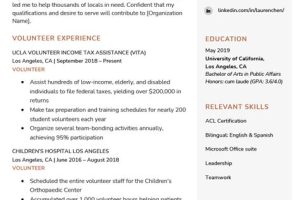Table of Contents
Looking to develop an effective volunteer program strategy? Discover how to attract, engage, and retain volunteers with our comprehensive approach. From defining objectives to implementing a recruitment plan, our expert guidance will help you create a successful volunteer program that aligns with your organization’s mission and values.
Volunteerism is a powerful force that drives positive change in communities worldwide. As organizations seek to engage volunteers in their missions, it becomes crucial to develop a robust volunteer program strategy. This strategy not only ensures the effective utilization of volunteers’ skills and passions but also maximizes the impact of their contributions. Transitioning from a casual approach to a more structured and intentional volunteer program can be a game-changer for any organization. By implementing clear goals, streamlined processes, and targeted recruitment efforts, organizations can cultivate a thriving volunteer community that fosters meaningful connections and generates lasting outcomes.
Introduction
A well-structured and effective volunteer program strategy is crucial for organizations that rely on volunteers to achieve their goals. Whether it is a nonprofit, charity, or community-based organization, having a clear plan in place ensures that volunteers are engaged, motivated, and contributing meaningfully to the cause. In this article, we will discuss the key elements of a successful volunteer program strategy and provide insights into how organizations can develop and implement such a strategy.
Defining Goals and Objectives
One of the first steps in creating a volunteer program strategy is to define clear goals and objectives. This involves understanding the needs of the organization and aligning them with the skills and interests of potential volunteers. By establishing specific and measurable goals, organizations can effectively communicate their expectations and track progress over time.
Recruitment and Selection
The recruitment and selection process plays a pivotal role in building a strong volunteer team. Organizations must identify target audiences and develop tailored recruitment strategies to reach them. Utilizing various channels, such as social media, community events, and online platforms, can help attract a diverse pool of volunteers. Additionally, implementing a selection process that assesses compatibility and skills ensures that volunteers are well-suited for their roles.
Training and Orientation
Once volunteers are selected, providing comprehensive training and orientation is essential to equip them with the necessary knowledge and skills. Training sessions should cover organization-specific information, the volunteer’s role and responsibilities, as well as any required skills or certifications. A well-prepared volunteer will feel more confident and capable, leading to higher engagement and productivity.
Effective Communication
Establishing clear lines of communication is vital for a successful volunteer program. Regularly updating volunteers about organizational news, events, and opportunities helps them feel engaged and connected to the cause. Utilizing various communication channels, such as email newsletters, social media groups, and online forums, allows volunteers to stay informed and easily reach out for assistance or clarification.
Recognition and Rewards
Recognizing and rewarding volunteers for their contributions is crucial in maintaining their motivation and commitment. Organizations should develop a recognition system that acknowledges volunteers’ efforts and achievements. This can include certificates, letters of appreciation, public acknowledgments, or even small tokens of gratitude. Celebrating milestones and hosting volunteer appreciation events can further foster a sense of belonging and satisfaction.
Feedback and Evaluation
Regularly seeking feedback from volunteers allows organizations to continuously improve their volunteer program. Implementing evaluation mechanisms, such as surveys or focus groups, provides valuable insights into volunteers’ experiences, challenges, and suggestions for improvement. Actively listening to volunteers’ feedback and making appropriate changes demonstrates an organization’s commitment to their volunteers’ satisfaction and growth.
Volunteer Retention
Retaining volunteers requires ongoing effort and attention. Organizations should create opportunities for personal and professional development, allowing volunteers to enhance their skills and knowledge. Providing flexibility in scheduling and offering meaningful roles that align with volunteers’ interests and strengths can also contribute to higher retention rates. Additionally, fostering a supportive and inclusive environment where volunteers feel valued and respected is key to retaining their commitment.
Continuous Program Assessment
Regularly assessing the overall effectiveness of the volunteer program is essential for long-term success. This involves analyzing data, reviewing outcomes, and identifying areas for improvement. By monitoring key metrics, such as volunteer satisfaction, retention rates, and impact on organizational goals, organizations can make data-driven decisions to optimize their program strategy.
Adaptation to Changing Needs
A successful volunteer program strategy should be adaptable to changing circumstances and evolving needs. Organizations must stay responsive to shifts in their own priorities, as well as the broader social and economic landscape. Regularly reassessing goals, updating recruitment strategies, and evaluating the effectiveness of program elements ensures that the volunteer program remains relevant and impactful.
Conclusion
Developing a volunteer program strategy is a crucial step for organizations seeking to effectively engage and utilize the skills of volunteers. By defining clear goals, implementing robust recruitment and training processes, fostering effective communication, recognizing volunteers’ efforts, and continuously assessing the program’s effectiveness, organizations can create a vibrant and impactful volunteer program. A well-designed strategy not only benefits the organization but also provides volunteers with meaningful opportunities to contribute to causes they care about.
Goal Setting
Setting clear and measurable goals is crucial for implementing an effective volunteer program strategy. By identifying specific objectives and desired outcomes, organizations can improve volunteer engagement and maximize their impact. Clear goals also facilitate the evaluation of program success and help in making necessary adjustments for continuous improvement.
Volunteer Recruitment
A successful volunteer program strategy starts with a robust recruitment process. Organizations need to identify the skill sets and qualities they are looking for in volunteers, develop compelling messaging and outreach strategies, and employ a variety of recruitment channels. By casting a wide net and targeting individuals who align with the organization’s mission, programs can attract a diverse pool of volunteers with specialized expertise.
Volunteer Training and Orientation
Investing time and resources into comprehensive training and orientation sessions for volunteers is crucial to ensure they are equipped with the necessary knowledge and skills to contribute effectively. These sessions should cover organizational values, program objectives, volunteer responsibilities, and any specific training required for the tasks they will undertake. Providing ongoing training opportunities can further enhance volunteer performance and retention.
Volunteer Recognition and Retention
Recognizing and appreciating the efforts of volunteers can significantly contribute to their motivation and retention over time. Developing a formal recognition program that acknowledges and honors volunteer contributions is essential. Recognition can be through certificates, awards, public acknowledgments, or even small gestures like handwritten thank-you notes. Regular communication and involving volunteers in decision-making processes can also create a sense of ownership and foster long-term commitment.
Volunteer Supervision and Support
Maintaining open lines of communication and providing ongoing support is critical for volunteer satisfaction and success. Establishing a clear chain of command and assigning dedicated staff members to supervise and support volunteers facilitates efficient coordination and resolves any issues that may arise. Regular check-ins, feedback sessions, and opportunities for volunteers to share their concerns and suggestions should also be integrated into the program.
Volunteer Evaluation and Impact Measurement
Monitoring and evaluating the impact of the volunteer program is essential to assess its effectiveness and make data-driven improvements. Organizations should establish key performance indicators (KPIs) and metrics to track volunteer engagement, satisfaction, and the overall impact they contribute towards the organization’s mission. Regular evaluation helps identify areas for growth and informs program modifications to better align with organizational goals.
Community Partnerships and Collaboration
Creating partnerships and collaborating with other organizations, both within and outside the sector, can broaden the opportunities available to volunteers and strengthen the overall impact of the program. Forming strategic alliances allows for shared resources, expertise, and leveraging networks to reach a wider audience. These collaborations can range from joint recruitment efforts and cross-training initiatives to joint program implementation and advocacy campaigns.
Continuous Improvement
Volunteer program strategies should be treated as ongoing initiatives that require regular review and improvement. Collecting feedback from volunteers, staff, and other stakeholders is essential to identify areas that need refinement and innovation. By constantly adapting and improving the program, organizations can address challenges, embrace emerging trends, and create a culture of excellence in volunteer engagement.
In today’s competitive world, organizations are constantly seeking ways to create a positive impact on society and build a strong reputation. One effective strategy that many organizations have adopted is implementing a volunteer program. A well-designed volunteer program can not only contribute to the betterment of communities but also enhance the organization’s image and promote employee engagement. Here, we outline the key benefits and considerations of developing a volunteer program strategy.
Benefits:
- Enhanced corporate social responsibility: Implementing a volunteer program demonstrates an organization’s commitment to giving back to society. This can bolster its corporate social responsibility image and attract socially conscious consumers and partners.
- Improved public perception: Engaging in volunteer work allows organizations to showcase their commitment to making a difference. Positive media coverage and word-of-mouth recommendations can significantly enhance the organization’s reputation and brand image.
- Increased employee engagement and satisfaction: Volunteering opportunities provide employees with a chance to contribute beyond their regular job responsibilities. This can lead to higher job satisfaction, increased loyalty, and improved employee morale. Additionally, volunteering can foster teamwork and collaboration among employees.
- Professional development opportunities: Volunteer programs often offer employees the chance to develop new skills or apply existing ones in different contexts. This can contribute to their professional growth, making them more valuable assets to the organization.
- Networking and relationship building: Engaging in community service activities can help organizations establish valuable connections with other businesses, community leaders, and stakeholders. These relationships can lead to new business opportunities and partnerships.
Considerations:
- Aligning with organizational values: It is essential to develop a volunteer program that aligns with the organization’s mission and values. This ensures authenticity and helps communicate a consistent message to stakeholders.
- Identifying community needs: Before implementing a volunteer program, thorough research should be conducted to identify the most pressing needs of the community. This will enable the organization to design initiatives that address these needs effectively.
- Providing adequate resources: Allocating sufficient resources, both financial and human, is crucial for the success of a volunteer program. This includes providing training, supervision, and necessary tools and equipment to volunteers.
- Evaluating impact and success: Establishing mechanisms to measure the impact and success of the volunteer program is essential. Regular evaluation allows organizations to make improvements, track progress, and demonstrate the program’s effectiveness to stakeholders.
- Maintaining long-term commitment: It is important to ensure the sustainability of the volunteer program by fostering a culture of volunteerism within the organization. This can be achieved through ongoing communication, recognition, and creating opportunities for continued engagement.
In conclusion, a well-designed volunteer program strategy can bring numerous benefits to organizations, including enhanced corporate social responsibility, improved public perception, increased employee engagement and satisfaction, professional development opportunities, and networking and relationship building. However, careful considerations, such as aligning with organizational values, identifying community needs, providing adequate resources, evaluating impact and success, and maintaining long-term commitment, are essential for its successful implementation. By investing in a volunteer program, organizations can not only make a positive impact on society but also strengthen their reputation and build a more engaged workforce.
Thank you for taking the time to visit our blog and learn about our Volunteer Program Strategy. We hope that the information provided has given you a deeper understanding of the importance of developing a well-structured and effective volunteer program within your organization.
Volunteers play a crucial role in the success of many non-profit organizations, providing valuable support and resources that enable these organizations to achieve their missions. By implementing a comprehensive strategy, you can maximize the impact of your volunteers and create a positive experience for both your organization and those who generously give their time and skills.
One key aspect of a successful volunteer program strategy is careful planning and organization. By clearly defining your organization’s goals and objectives, you can establish a solid foundation for your volunteer program. This includes identifying the specific roles and responsibilities that volunteers will take on, as well as the skills and qualifications required for each position.
In addition to planning, effective communication is essential for a well-functioning volunteer program. Regularly keeping volunteers informed about upcoming projects, events, and opportunities for involvement helps to maintain their engagement and commitment. Utilizing various communication channels, such as email newsletters, social media platforms, and volunteer management software, can help streamline this process and ensure that volunteers receive timely and relevant information.
Furthermore, recognizing and appreciating the contributions of your volunteers is vital for sustaining their motivation and dedication. Expressing gratitude through personalized thank-you messages, volunteer appreciation events, and certificates of recognition can go a long way in making volunteers feel valued and appreciated. Moreover, providing ongoing support and training opportunities enables volunteers to enhance their skills and knowledge, further benefiting both the volunteers and your organization.
In conclusion, developing a volunteer program strategy is an essential step towards harnessing the power of volunteers and maximizing their impact within your organization. By carefully planning and organizing your program, effectively communicating with volunteers, and recognizing their contributions, you can create a positive and fulfilling experience for all involved. We hope that this blog post has provided you with valuable insights and inspiration to enhance your volunteer program strategy. Thank you again for visiting, and we wish you the best of luck in your endeavors!
.
Here are some frequently asked questions about Volunteer Program Strategy:
What is a volunteer program strategy?
A volunteer program strategy is a comprehensive plan that outlines the goals, objectives, and activities of a volunteer program. It includes strategies for recruiting, training, managing, and recognizing volunteers, as well as evaluating the effectiveness of the program.
Why is a volunteer program strategy important?
A volunteer program strategy is important because it provides a clear direction and framework for the volunteer program. It helps organizations effectively engage volunteers, align their efforts with the organization’s mission, and maximize the impact of their volunteer initiatives.
How do you develop a volunteer program strategy?
Developing a volunteer program strategy involves several steps:
- Assessing the organization’s needs and goals
- Identifying volunteer roles and responsibilities
- Creating a recruitment plan
- Designing a training program for volunteers
- Establishing systems for volunteer management
- Implementing methods for recognizing and rewarding volunteers
- Evaluating the program’s effectiveness and making improvements
What are the benefits of having a volunteer program strategy?
Having a volunteer program strategy offers numerous benefits, including:
- Increased volunteer engagement and satisfaction
- Improved volunteer recruitment and retention
- Enhanced coordination and communication with volunteers
- Greater alignment of volunteer efforts with organizational goals
- Stronger community partnerships and support
- Measurable impact and effective use of resources
How can organizations evaluate the success of their volunteer program strategy?
Organizations can evaluate the success of their volunteer program strategy by:
- Tracking volunteer recruitment and retention rates
- Monitoring volunteer satisfaction and feedback
- Assessing the impact and outcomes of volunteer activities
- Conducting surveys or interviews with volunteers
- Reviewing program data and metrics
- Comparing results to the initial goals and objectives






